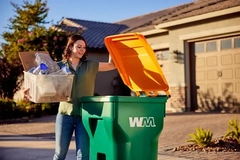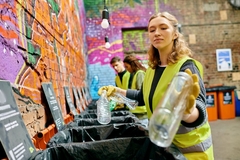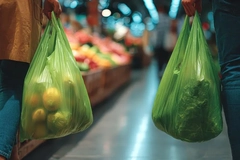Methane minimization: European NGO promotes pre-landfill packaging waste treatment
20 Jun 2024 --- The adoption of biological stabilization methods in waste management is expected to rise in the coming years, according to Janek Vahk, zero pollution manager at Zero Waste Europe (ZWE). As landfills may release more methane than previously anticipated, ZWE suggests treating waste biologically before landfilling as an alternative strategy to minimize methane generation.
The majority of plastic packaging waste is sent to landfills or disposed of in the environment as a result of poor product design and lack of political infrastructure. The US-based Supply Chain Solutions Center has found that of the 9.2 billion metric tons of plastic produced, 9% has been recycled properly.
Shifting from gas capture to waste biostabilization prior to landfilling provides an effective and sustainable strategy for managing waste and addressing climate change, finds ZWE in its latest report.
“Unlike traditional methods that focus on capturing and converting methane to energy, this approach prevents methane production at the source, offering a more effective solution to the environmental challenges posed by landfill waste,” Vahk tells Packaging Insights.
 Biostabilization can accommodate source-separated organic waste and the biological fraction of mixed waste, making it suitable for global waste management.Globally feasible?
Biostabilization can accommodate source-separated organic waste and the biological fraction of mixed waste, making it suitable for global waste management.Globally feasible?
Biostabilization in waste management, as opposed to traditional landfill gas capture, involves treating waste before landfilling to avoid fossil-derived CO2 emissions, as with thermal treatments, such as incineration.
The method suggested by ZWE reduces emissions and, where additional sorting of leftover mixed waste (LMW) is included, supports a transition toward a more circular and resilient economy.
“The flexibility of these systems, which can accommodate both source-separated organic waste and the biological fraction of mixed waste, makes them suitable for diverse waste management contexts globally, including in developing countries,” Vahk tells us.
“Additionally, implementing MRBT (Mechanical Recovery and Biological Treatment) systems can create employment opportunities in waste sorting and treatment, providing further socio-economic benefits.”
Landfilling rethought
Biological stabilization is a pretreatment process — similar to composting — that occurs under aerobic conditions, meaning it is done in the presence of oxygen, explains Vahk.
“It’s estimated that biological stabilization, combined with biologically active landfill covers, can reduce methane generation by up to 95%,” he adds.
MRBT further enhances this reduction by extracting additional recyclables from LMW — reducing the climate impact of landfilling and incineration.
The approach minimizes the global temperature impact of residual waste management and reduces the likelihood of methane emissions reaching critical levels.
Mitigating climate change
Global waste management is fraught with challenges, particularly concerning methane emissions from landfills. In 2020, over 2.1 billion metric tons of municipal solid waste were generated, with 62% managed at controlled facilities, and nearly half of it landfilled, finds ZWE’s report.
With 2.7 billion people in need of waste collection services, the remaining 38% was handled uncontrollably. Methane, a potent short-term GHG gas, is a significant by-product of landfilling biodegradable waste, contributing substantially to global warming.
“With the pressing need to reduce GHG emissions, the shift toward biological stabilization represents a critical step in global waste management strategies,” says Vahk.
By Natalie Schwertheim











